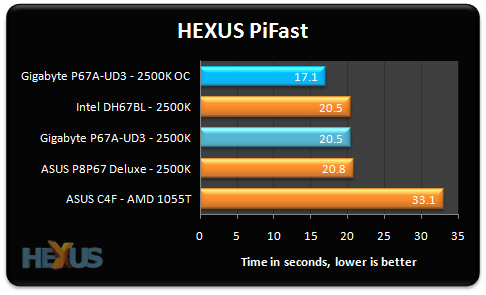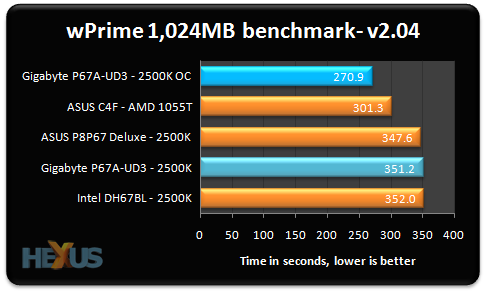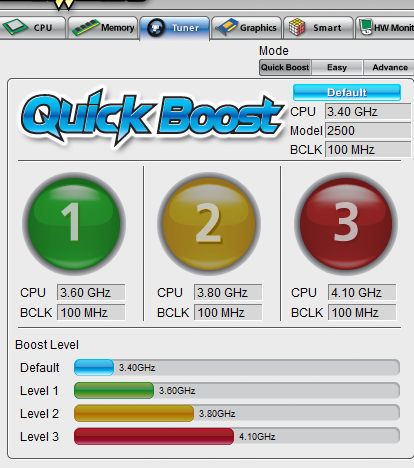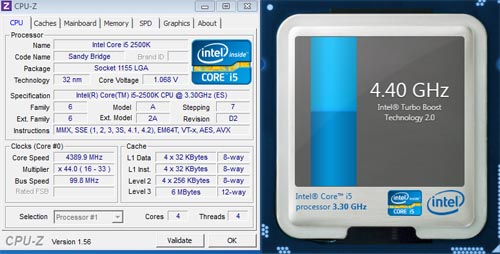Overclocking Core i5 2500K
Gigabyte enables you to overclock Sandy Bridge processors on the P67 chipset in two ways. Firstly, the Windows-based EasyTune 6 utility has a built-in Quick Boost feature that overclocks the chips to predetermined levels, as shown by the graphic below.
Counter to intuition, the board needs to be rebooted before the setting - which simply raises the voltage and multiplier - can be activated. Spin back into Windows and the chip runs at 4.1GHz with all cores active.
At default the Core i5 2500K operates at 3.4GHz when all cores are used, meaning the 700MHz overclock is decent enough. The second method involves dipping into the BIOS and changing the voltages and multiplier manually.
Increasing the core voltage is fraught with a little more danger on Sandy Bridge chips than on previous generations, we believe. Anything above 1.3V isn't conducive for the processor's long-term health. To this end, we manually inputted 1.3V and changed the CPU multiplier, rebooted into Windows, and then continued increasing the multiplier until wPrime failure set in.
And that failure occurred sporadically at 4.5GHz (45x). Knocking it back a multiplier and 4.4GHz was solid throughput testing. The frequency is impressive considering that the chip was cooled by a piddly reference heatsink, and the overclock matches the one achieved on the ASUS P67 board.
Re-running HEXUS PiFast and wPrime at the 4.4GHz clock speed, here's what we got.

Not a huge gain in the PiFast test, mainly due to the Turbo Boost ability on a default chip, which scales to 3.7GHz in light-load scenarios.













